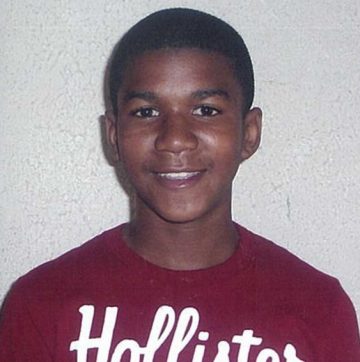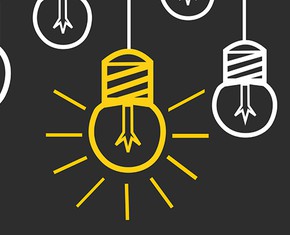The views expressed in our content reflect individual perspectives and do not represent the authoritative views of the Baha'i Faith.
Does “innate bias” exist? Neuroscientists—me included—want to know the answer.
Five years ago I wrote a piece for the Harvard Business Review on racial tensions in response to the Trayvon Martin killing. Specifically, the article detailed neuroscience findings which shed some light on our innate bias against those we perceive to be different from us (our “out group”), as opposed to those who are similar to us (our “in group”).

Trayvon Martin
The original article discussed research which demonstrated that activation of an empathy area of the brain—the anterior cingulate cortex—was significantly decreased if the person in pain came from a different racial group than you. In essence, the research demonstrated evidence of an empathic bias toward racial in-group members at the neuronal level.
Since that time, our society and many others have repeatedly experienced racially-driven events, and with the recent tragedy in Charlottesville, as well as issues around immigration and police brutality, racial tensions have risen to an alarmingly high level.
So it’s timely that recent research has demonstrated that daily exposure to diverse races may cause our brain to change the way it deals with those we perceive as different from us (i.e., “out group” members).
The newest study repeated the original one, but assessed Chinese citizens who had recently immigrated to Australia, and looked at their brain’s response to seeing people from different races in pain. The researchers found that a correlation existed between daily exposure to people of another racial group and the ability of the brain to see those people as part of the “in group.”
So, it seems that the more contact you have with people of other racial groups (i.e., seeing them in your neighborhood, at school or in the grocery store) the more you’re able to relate to them as similar to you, and hence you will start to act more empathically towards them.
Why is this important? All across the world, troubling issues of diversity are coming to a head. Based on the neuroscience data, any move towards creating a less diverse country, with regards to ethnicity and culture, would impede our brains’ ability to expand our “in group.” With less exposure to diverse groups, research suggests that children would literally have their brains wired to perceive these groups as a threat, and hence display less empathy and understanding of them, resulting in a higher likelihood of bullying, intolerance and overall bias. This could then set up a perpetual cycle that extends through entire generations, where trust between different ethnicities suffers. How can we as a civilization accept such a daunting proposition, which basically keeps us stuck in a society of culturally-biased and even hateful and racist behaviors?
One of the foundational beliefs of the Baha’i Faith—racial unity and the oneness of all humanity—means that Baha’is strive to create a world civilization focused on unity in diversity:
We must use these powers in establishing the oneness of the world of humanity, appreciate these virtues by accomplishing the unity of whites and blacks, devote this divine intelligence to the perfecting of amity and accord among all branches of the human family … – Abdu’l-Baha, The Promulgation of Universal Peace, p. 51.
Additionally, Baha’is believe in harmony between science and religion:
Whatever the intelligence of man cannot understand, religion ought not to accept. Religion and science walk hand in hand, and any religion contrary to science is not the truth. – Abdu’l-Baha, Paris Talks, p. 131.
Therefore, it is gratifying to see the scientific field of neuroscience serving to support the core Baha’i concept of racial unity. It turns out that being exposed to different cultures, norms and ethnicities creates physical changes in our brains that make us more likely to understand, trust and empathize with others. Once this trust is established, our brain’s natural bias against those who seem different from us goes away.
Scientists understand that our brains’ bias against those different from us is simply an adaptation through evolution. The vast majority of our brain evolution took place during a time where danger was everywhere, and moment-to-moment survival became a very real issue. Therefore, our brain evolved to err on the side of caution, and assume that anyone or anything different was a threat until proven otherwise. This mechanism worked well to maximize our chance of survival thousands of years ago, but since moment-to-moment survival isn’t as prevalent an issue anymore, this old, biased brain of ours can be a problem in our current society. The human brain simply hasn’t been able to adapt to the rapid evolution that our society has encountered over the past couple thousand years.
So, what can we do to overcome this “old” brain reaction of ours which perceives differences as a threat? Neuroscience research suggests a few tips:
- First and foremost is an understanding that by virtue of having a brain, you are biased. It’s an evolutionary adaptation that served a purpose long ago, but still rears its ugly head today. This acceptance of “it’s not me, it’s my brain” helps people remove the stigma attached to bias and racism, thus enabling them to take a more rational, constructive approach towards their mindset and behavior.
- Now that you’re aware of your naturally-biased brain, you can take a step back and be more willing to explore experiencing diverse others. Exposure in this manner can build commonalities with them, which seems to be key. By discovering commonalities, research has demonstrated that you will then literally rewire your brain to be more empathic towards others who you perceive as different than you, and ultimately your brain will begin to perceive them as part of your “in group.” Finding commonality with that stranger is one of the most effective techniques to help manage this “in group vs. out group” dilemma.
- Practice taking a first-person perspective of what someone else is going through. Research from Harvard University suggests that if you can write a few sentences about how a person who may not be part of your “in group” is thinking (from their own perspective) you will change the region of the brain you use to deal with them. By forcing ourselves to reappraise in this manner, we start to think about that stranger with the part of our brain we normally use to reflect upon ourselves, which enables us to be more trusting. We actually switch which brain areas are dealing with the relationship, and move the person to that part of the brain used for “in-group” processing.
We are at a point in our society where astounding technological advances seem to emerge almost daily and our intellect and potential grows with each generation. However, we’re still at the mercy of this old brain of ours. If we can create some self-awareness around the limitations of our outdated brains, and tie in what neuroscience now tells us about how to best manage our biases by embracing diversity, then maybe we can make a difference in helping our current and future generations with astounding spiritual advancements as well.
















Comments
Sign in or create an account
Continue with Googleor